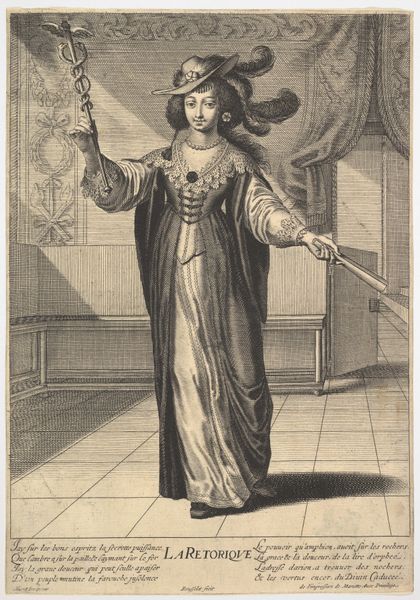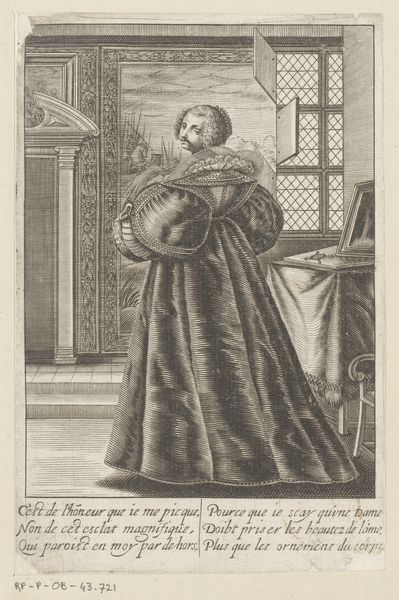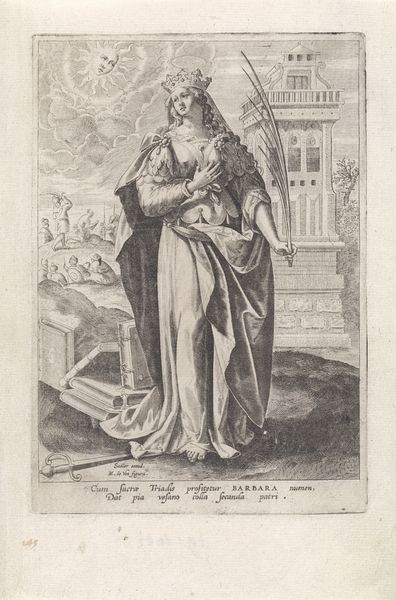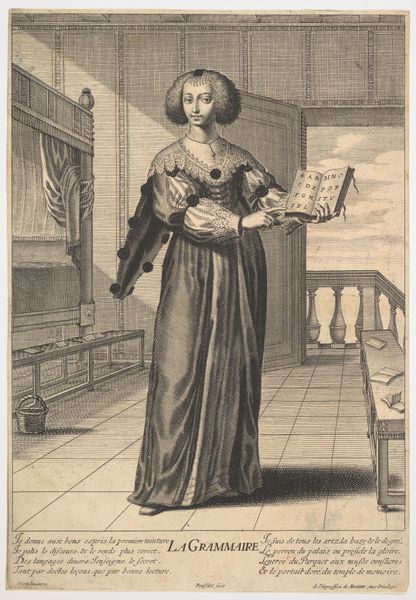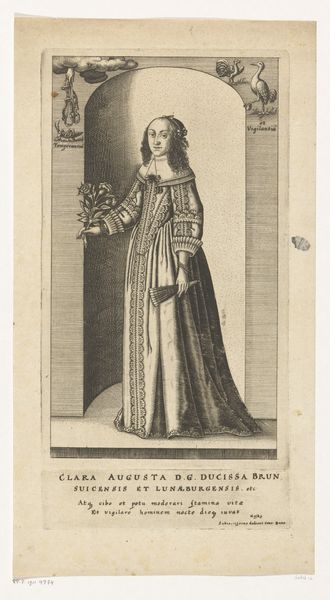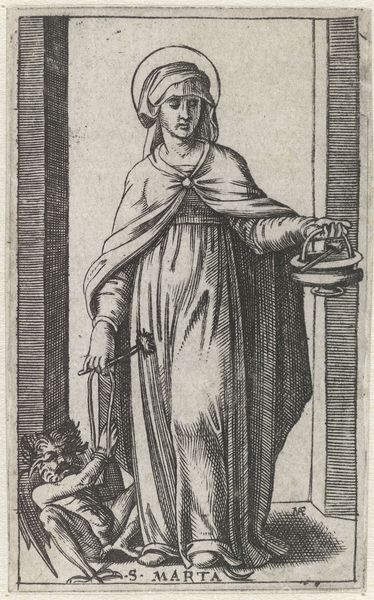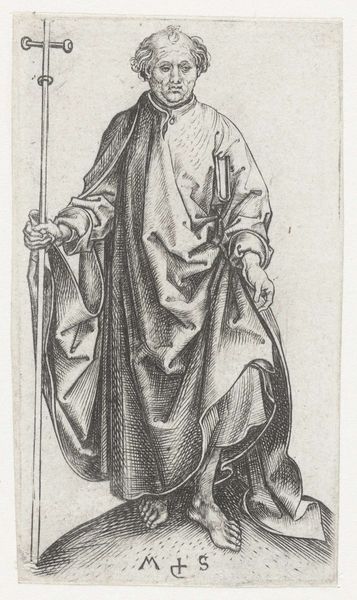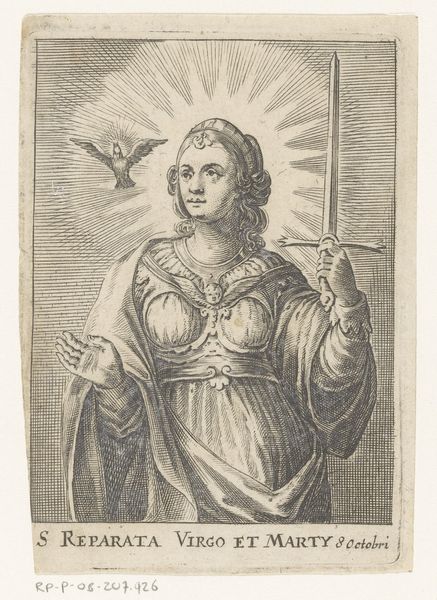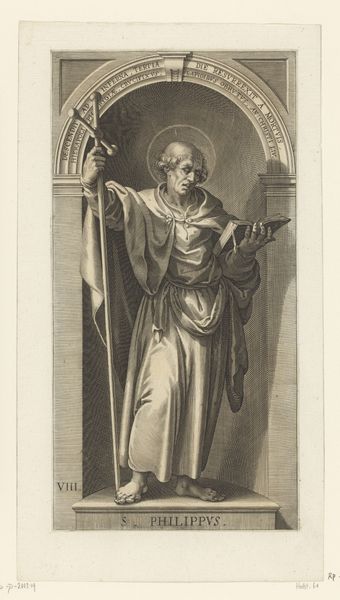
Dialectic: a young woman standing in a decorated interior and touching her right index finger to her left middle finger in a counting gesture, at her feet is a toad seated on a stack of books, from "The liberal arts" (Les arts liberaux) 1633 - 1635
0:00
0:00
drawing, print, engraving
#
portrait
#
drawing
#
allegory
#
baroque
# print
#
book
#
figuration
#
form
#
11_renaissance
#
line
#
history-painting
#
academic-art
#
engraving
Dimensions: image: 12 1/8 x 8 3/8 in. (30.8 x 21.3 cm)
Copyright: Public Domain
This print, made by Gilles Rousselet, represents Dialectic, one of the seven liberal arts. The figure gestures with her fingers as though counting off points in an argument. In 17th-century France, the liberal arts curriculum was the bedrock of elite education. Dialectic, or logic, was central, teaching students to construct arguments and expose fallacies. Rousselet’s image reflects the period’s intense interest in reason and order, seen in its architecture and philosophy. But it also hints at anxieties about rhetoric’s potential for deception. Notice the toad, a symbol of sophistry, lurking at Dialectic’s feet, perched upon books. Is it being defeated or empowered? To fully understand this image, we must consider the changing role of rhetoric in French society. Was it viewed as a tool for social mobility, or a dangerous source of instability? Research into period educational manuals, political pamphlets, and art criticism might reveal more. The meaning of art is always contingent on such contexts.
Comments
No comments
Be the first to comment and join the conversation on the ultimate creative platform.
